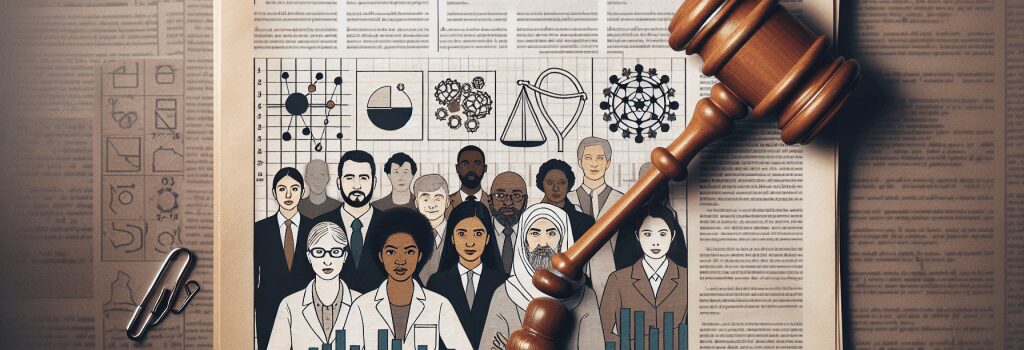Legal Battles Over Diversity Initiatives in Science: A Technical and Societal Analysis

Introduction
In recent months, a series of lawsuits targeting programs designed to promote diversity, equity, and inclusion (DEI) in the sciences have emerged, sparking intense debate over affirmative action and equal opportunity in academia. These legal challenges, initiated by groups such as Do No Harm, question the legality of initiatives that intentionally target underrepresented populations in fields like chemistry and medicine. This article delves into the technical, legal, and societal implications of these lawsuits, analyzing the foundational legal principles and the potential impact on innovation in the scientific community.
Recent Lawsuits and Their Legal Basis
On March 5, the organization Do No Harm, known for its opposition to DEI efforts, filed a lawsuit against the American Chemical Society (ACS) over its Scholars Program. The program, which offers financial support to chemistry students from underrepresented backgrounds, faced criticism on the grounds that it is not available to white and Asian applicants. Shortly thereafter, Do No Harm brought a similar suit against the University of Pennsylvania regarding its partnership with the Black Doctors Directory—a database intended to help patients locate Black physicians.
Technical and Legal Context
The legal arguments in these cases center around alleged violations of Title VI of the Civil Rights Act of 1964 and the Civil Rights Act of 1866. Under Title VI, any program receiving federal financial assistance must not discriminate on the basis of race, color, or national origin. Do No Harm argues that programs like ACS’s Scholars Program effectively exclude individuals based on their racial background, thus contravening these federal mandates. Furthermore, the organization contends that ACS is subject to federal directives by virtue of its tax-exempt status and the tax deductions it receives for charitable contributions.
- Current judicial interpretations of race-conscious policies following the Supreme Court’s 2023 decision against considering race in college admissions.
- The technical legal framework involving federal funding channels, which can be impacted by shifts in administrative policy.
- The role of executive orders on DEI initiatives in shaping the implementation of diversity programs within organizations that benefit from federal resources.
Impact on the Scientific Community and Research Innovation
Critics warn that the rollback of DEI programs poses a significant threat to nurturing future talent in the sciences. Programs like the ACS Scholars Program have enabled approximately 3,500 students to pursue careers in research, offering a pathway for those who might otherwise be excluded due to longstanding structural inequities. Scientists like Daniel Mindiola, a chemistry researcher at the University of Pennsylvania and an alum of the ACS program, emphasize that these initiatives are not forms of discrimination but rather necessary measures to level the playing field and inject new perspectives into scientific inquiry.
Expert Opinions and Future Implications
Legal experts, including Vinay Harpalani from the University of New Mexico School of Law, suggest that the momentum provided by recent judicial decisions has emboldened groups to challenge DEI policies across educational and scientific institutions. Harpalani remarks, “The recent shift in legal interpretation might encourage a broader application of a doctrine that excludes race from any decision-making processes.” Meanwhile, Dan Morenoff of the Manhattan Institute is optimistic about the prospects of these legal challenges, arguing that strong adherence to contracts and nondiscrimination principles may lead to successful outcomes for the plaintiffs.
DEI in the Era of Advanced Technology and Data-Driven Decisions
Beyond the courtroom, the integration of advanced technologies in analysis and decision-making processes is reshaping how DEI efforts are implemented. Fields such as AI and data analytics are increasingly used to scrutinize recruitment and funding strategies within scientific research. Statistical models and machine learning algorithms help institutions identify disparities in representation and performance, prompting more targeted interventions. However, the challenge remains to balance algorithmic neutrality with the need to address systemic inequities—a balance that is currently under intense legal and technical scrutiny.
Analysis of Program Sustainability and Administrative Adjustments
In light of these lawsuits, organizations like ACS are already undertaking administrative measures to recalibrate their messaging and program frameworks. For example, the ACS updated its web content by modifying headlines from references to “diversity, equity, inclusion and respect” to a focus on “inclusion and belonging.” Such changes underscore the pressure on institutions to adapt to an evolving legal environment. With applications for the Scholars Program having recently closed, the future of these supportive initiatives hangs in balance, raising concerns about the long-term sustainability of efforts to diversify the scientific workforce.
Conclusion
The legal challenges targeting diversity initiatives in science represent more than isolated disputes—they are at the intersection of law, policy, and innovation. While proponents argue that these programs provide essential support to historically underrepresented groups, opponents contend that they breach constitutional and contractual mandates by explicitly considering race in decision-making. The outcome of these lawsuits may redefine the future of affirmative action in academia while influencing the broader ecosystem of scientific research and technological innovation. As the scientific community awaits further judicial clarification, the debate over how best to achieve a balanced, inclusive environment remains as critical as ever.
Источник: Ars Technica